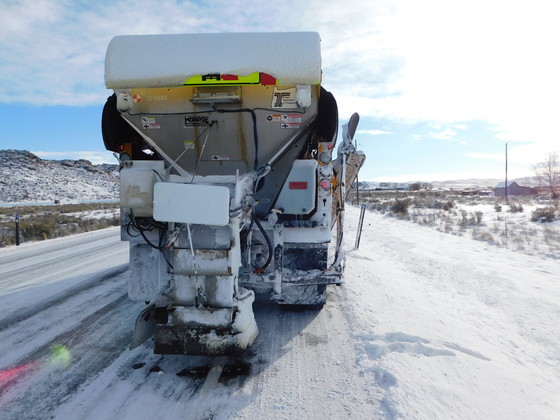Use extra caution when driving around snowplows in this winter weather
Jan. 3, 2022
Contacts:
Don Hamilton, 503-704-7452
Tom Strandberg, 541-663-6261
With winter weather persisting in many parts of the state, drivers should remember to always pay attention when approaching winter maintenance equipment and never pass snow plows on the right.
ODOT plows were operating in all corners of Oregon Monday, with heavy snow closing Interstate 84 in the Columbia River Gorge and causing whiteout conditions on Mount Hood. Extra care is needed to look out for the workers along slippery roads. Remember to never drive around barricades; they’re there to keep everyone safe.
And where there are snow plows road workers are nearby. Consider that just since Christmas Day there have been 10 crashes across Oregon where drivers struck an ODOT plow.
As a reminder to motorists, passing on the right is illegal when there is no lane available and the driver does not have a clear view ahead (ORS 811.415). Many, if not most plows have retractable wing plows that extend eight feet into the right lane and use of the wing plow severely restricts a driver’s view into the right lane.
Dual wing plows used on some multi-lane highways also have plow blades that extend off the left side of the truck.
When you pass snowplows, you run the risk of hitting the plow blades, damaging your vehicle or even going off the road. The plowed snow may contain rocks and other debris, so the safe choice is to stay several car lengths behind plowing operations.
If conditions are severe enough to require a snowplow, the safest place to be is well behind the plow. They travel slowly but will pull over periodically to let you pass when safe to do so.
Especially during severe winter weather like we saw today, the safest thing to do is avoid traveling all together.
If you must travel, here are a few tips.
- Know before you go. Visit tripcheck.com and see road conditions along your route, start to finish.
- Remember that many tripcheck.com cameras include temperature, elevation and other critical details about road conditions.
- Drive for conditions. If encountering rain, mud, snow, ice or extra traffic be sure to slow down and give extra space for stopping.
- Keep your vehicle in good operating shape, checking brakes, lights, tires and wipers regularly.
- Watch out for bicyclists and pedestrians. In wintry conditions, visibility drops.
- Pay attention to roadside message signs. They contain critical information about conditions on the road ahead.
- Be patient, wear your seat belt, pay attention to conditions and keep a sober driver behind the wheel to help ensure a safe arrival.

|